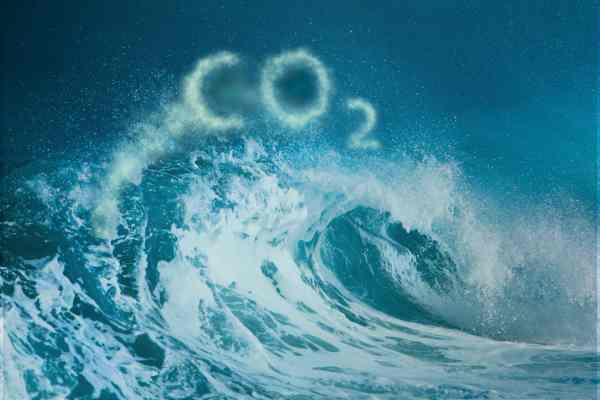The catch of the day is carbon
Could our oceans provide the key to shrinking our planetary carbon footprint?

Carbon removal is back in the limelight, but this time the world's gaze has turned to seawater as a medium for capturing the greenhouse gases ramping up temperatures worldwide.
Hidden beneath the ocean waves is a graceful dance of chemistry that constantly transforms atmospheric carbon into other forms, locking it away for eons.
It is this natural cycle that has captured the imagination of entrepreneurs such as Canadian carbon removal startup Equatic and Seattle's Banyu Carbon who seek to harness its enormous power to help move the needle towards gigaton-scale carbon removal.
Equatic made headlines earlier this month with the news that it had begun engineering its first commercial-scale ocean-based carbon dioxide (CO2) removal plant in Quebec.
Equatic says this will be the largest ocean-based carbon removal plant in the world tasked wtih amplifing the ocean’s ability to absorb and store large quantities of carbon through a removal process that's based on electrolysis. The process not only removes CO2 but generates carbon-negative hydrogen that can be sold as clean energy.
A demonstration project of its modular technology was recently on show in Singapore and the company has also been named a US Department of Energy Carbon Dioxide Removal Purchase Pilot Prize semifinalist as part of a program to identify high-integrity carbon removal technology.
Unlike Carbon Capture and Storage (CCS) technologies being investigated by heavy industries to capture and store their own carbon emissions, carbon removal seeks to draw carbon from the natural environment.
"Governing bodies around the world emphatically assert the need for accessible, cost-effective, and permanent carbon removal solutions at low-cost and with low energy requirements."
But many current technologies are yet to overcome the high operational costs required to scale up operations in the quest for gigaton-level carbon removal. And these solutions must also seek to preserve the natural environment in which they operate.
Equatic says the net energy requirement of its plant will be less than 1.4-megawatt hours per tonne of carbon dioxide removed which is necessary to achieve its aim of carbon removal at a cost of less than $US100 per tonne by 2030.
Equatic says its patented seawater electrolysis process, which was developed at UCLA’s Institute for Carbon Management, employs oxygen-selective anodes to produce green hydrogen without the unwanted byproduct of chlorine.
“Governing bodies around the world emphatically assert the need for accessible, cost-effective, and permanent carbon removal solutions, at low-cost, and with low energy requirements," Equatic chairman Edward Muller says. "Our commercial-scale development speaks directly to that need.”

Chemical challenge
Seattle startup, Banyu Carbon, is taking a different path to ocean-based carbon removal with a process based on a low-energy photochemical reaction that liberates CO2 from seawater.
By releasing the CO2 from the seawater, a similar amount can then be reabsorbed by seawater from the atmosphere. The liberated CO2 can then either be stored in geological formations or be used in products that lock it away in solid form.
According to Banyu Carbon, because only a small amount of sunlight is needed for the chemical reaction, the remainder can be used to generate solar electricity. In addition it says the photoacid molecules that drive the process are easy to make and contain no rare or toxic elements.
Founders Alex Gagnon and Julian Sachs were last week named among Bloomberg’s most influential climate leaders to watch in 2024. And the company is partway through a phase 1 research project to commercialise its technology which it hopes will provide a less energy-intensive path to gigaton-scale carbon removal.
The world’s oceans are part of a regular natural cycle that draws huge quantities of carbon dioxide out of the atmosphere. When CO2 is absorbed by seawater, chemical reactions occur that form hydrogen ions and bicarbonate ions. Bicarbonate ions carried by currents will be stored naturally in the ocean. So by amplifying this natural process in a carbon removal plant, carbon can be converted into by byproducts of hydrogen and bicarbonate which can then be reused or stored, effectively removing them from the atmosphere.





